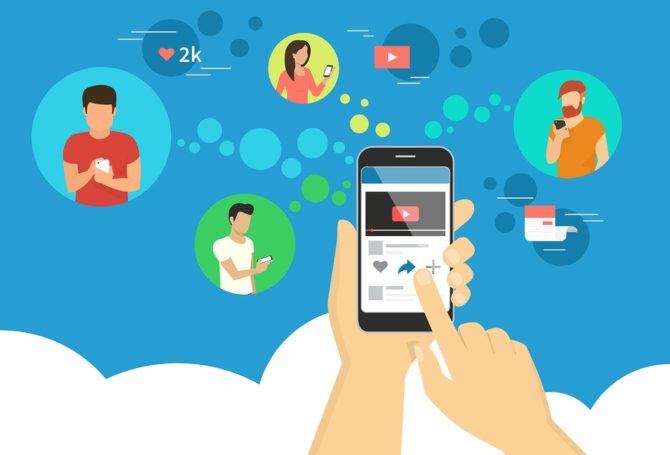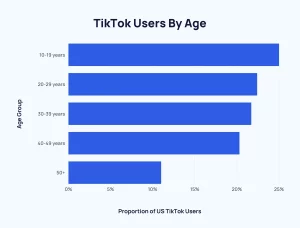
The Latest Frontier: Massive Online Content Sharing with Friends
When a campaign spends millions of dollars to reach voters, it makes sense to spend a few bucks to nail down where voters are hanging out and listening. Listener research tends to pitch forward, not backward and can be revealing about emerging media trends.
Cue Joe Biden’s potential 2024 re-election campaign. His political advisers are designing a digital outreach plan whereby Biden supporters can share content on advertising-free platforms such as TikTok and WhatsApp. The plan is based on extensive testing last summer to understand how political content is consumed.
“The review found phone-based apps and streaming television have grabbed an increasing share of attention from voters, which offer fewer opportunities for direct advertising,” The Washington Post reported.
“Options include paying social media influencers to produce and share supportive content, and encouraging volunteers or paid organizers to push messages directly to targeted voters in their phone contacts,” The Post reported. “There also are technologies that make it easier for volunteers to share campaign content to their networks.”
“The idea is not just to meet people where they are, but to meet people everywhere they are.”
“The idea is not just to meet people where they are, but to meet people everywhere they are,” Jen O’Malley Dillon, a senior Biden adviser, told The Post. “And that’s complicated and hard…because the places where people get information and the places where people communicate with each other about politics continue to fragment.”
Biden, who hasn’t formally announced a 2024 re-election bid, follows a long line of presidential communication influencers. Former President Donald Trump demonstrated the power of tweeting, early and often, even though President Obama was the first commander-in-chief to use Twitter.
Franklin Roosevelt is remembered for his fireside chats on radio, while few recall that Warren G. Harding was the first President to use radio. John F. Kennedy is regarded as the first President of the television era, despite Dwight Eisenhower holding the first televised presidential news conference in 1956. Eisenhower received an Emmy for his pioneering media breakthrough.
Political Campaign Ads
Much has been written about the deluge of political TV ads, many of which are negative portrayals of opponents. Despite voter protestations about negative advertising, candidates and their advertising advisers keep “going negative” because such ads are proven to influence voters, often undecided voters. The Democratic and Republican candidates in Oregon’s new Sixth Congressional District repeatedly called each liars. The Republican candidate filed a lawsuit over what he called a lie.
Under Federal Communication Commission rules, TV stations are obligated to accept ads from legally qualified political candidates, even when they may contain false statements, as long as federal candidates end with “I approve this ad”. Station news departments can and often do report on allegedly false statements, though such stories may run once or twice and appear on websites at far less frequency and reach than the political ads that can appear for days and various time periods across multiple TV channels.
Social media platforms have become the natural successor to convey negative political advertising and content. Content moderation by Facebook and Twitter has sought to flag or take down false or misleading material, only to stoke complaints and fears of censorship. Elon Musk’s takeover of Twitter has reduced content moderation and reinstated previously banned accounts, which critics say has led to an alarming increase of hate speech. There are simply fewer checks on false information.
As TV viewership is shifting to streaming services, social media use continues to spike. Data indicates that more than 80 percent of Americans use some form of social media, an increase of 30 million users from 2021 to 2022. Facebook claims around 180 million users. Nearly 110 million US households subscribe to one or more streaming services. Fewer than 27 million Americans lack internet access.
The Information War on Digital Media
Campaigning on digital media platforms presents its own unique challenges with trolls, bots, disinformation and algorithms that control what users see and promote divisive content that attracts user attention.
 TikTok, which launched in 2016, is in a league by itself amid charges it may share user data with the Chinese government. The omnibus spending bill moving through Congress will prohibit TikTok on any government device. Despite government fears, TikTok was the most downloaded app in 2021, with its largest audience in the United States. Demographic data indicates 57 percent of users are female, 25 percent are under the age of 20 and the platform has more Gen Z users than Instagram.
TikTok, which launched in 2016, is in a league by itself amid charges it may share user data with the Chinese government. The omnibus spending bill moving through Congress will prohibit TikTok on any government device. Despite government fears, TikTok was the most downloaded app in 2021, with its largest audience in the United States. Demographic data indicates 57 percent of users are female, 25 percent are under the age of 20 and the platform has more Gen Z users than Instagram.
Image editing programs have simplified interfaces that non-professionals have the ability to alter pictures or create “deep fakes” in which someone is edited into an image or video to say or do something they never did.
Social media changes rapidly. In Obama’s first presidential run in 2008, his campaign team pioneered email fundraising and organized house parties through a website, smartphones and social media, including a new platform called Twitter. By 2012, Facebook had emerged as a major “news source” and Obama campaigners powered door-knocking with an iPhone app.
As campaigns prepare for the 2024 presidential elections, the focus is on organic digital content that can be shared across social media platforms and creating private online communities, which were used in John Fetterman’s successful 2022 Senate bid. Fetterman’s campaign team assisted his supporters share negative video content of his Republican opponent, Mehmet Oz.
A new app called Greenfly exemplifies the shift toward what campaign officials call relational outreach. The app would make it easy for mass distribution of digital content to online friends and followers.
The nature of news consumption and information absorption has radically decentralized.
“The nature of news consumption and information absorption has radically decentralized,” a strategist told The Post. “We have to be able to engage in an information war.”




